FOOTPRINTS-CITSCI was launched on January 1st, as one of the 12 projects under TETTRIs cascade funding, with a mission to co-create solutions that drive transformative change in taxonomy. Supported by €166,000 in funding, the team is harnessing the power of citizen science and artificial intelligence to protect Norway’s wildlife and biodiversity.
Monitoring wildlife to protect biodiversity
In Norway, diverse ecosystems thrive in the stunning landscapes, including forests, mountains, and coastal areas. These habitats support many wildlife species, each playing an important role in the balance of ecosystems. However, many of these species are elusive and difficult to study, making it challenging to gather essential data needed for effective conservation efforts.
Recognising this gap, the FOOTPRINTS-CITSCI project has launched a citizen science initiative inviting the public to track wildlife by documenting animal footprints along ski and hiking trails in protected areas across Norway. By using snow tracks to monitor species that are rare, avoid human interaction, or are difficult to spot, the initiative aims to enhance wildlife observation and support protection measures.
Ultimately, FOOTPRINTS-CITSCI aims to collect essential and high-quality data on biodiversity while also offering a unique opportunity for citizens to connect with nature and engage them in the vital work of understanding and preserving wildlife.
“Ultimately, the main goal for me is to provide the general public with ways to identify the mammal tracks they come across, allowing them to generate important biological data and learn a thing or two in the process. I’m excited to see how machine learning can help and to work with new algorithms, but I love how goal-driven the team is; engagement and biological relevance, not fancy technology, remains the objective,” says Wouter Koch, Senior Advisor at the Norwegian Biodiversity Information Centre (NBIC). In FOOTPRINTS is role is to develop tools to aid the identification of mammal footprint identification using machine learning.
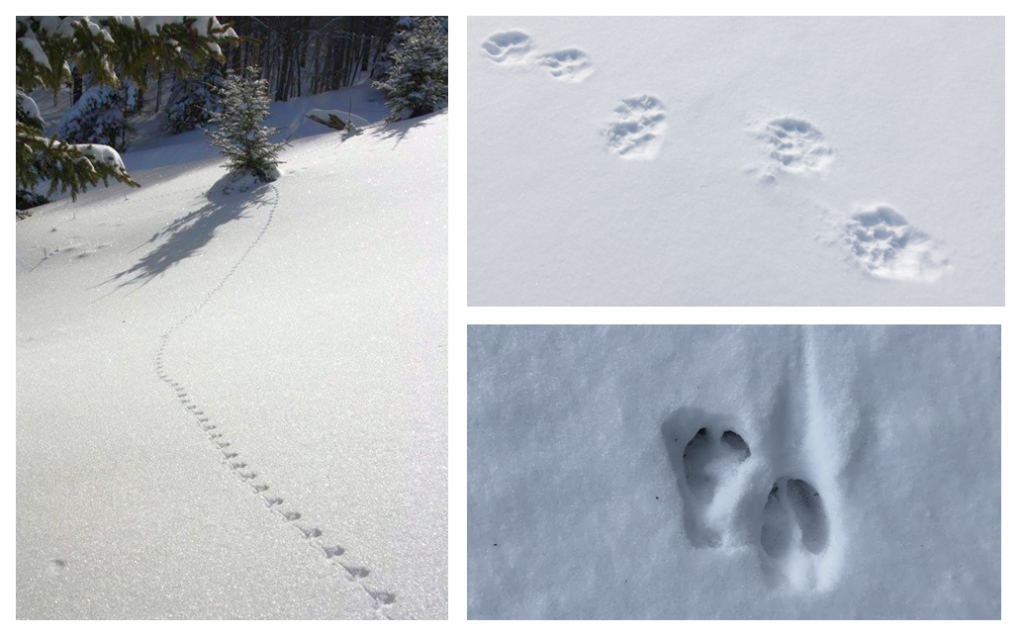
About FOOTPRINTS-CITSCI
FOOTPRINTS-CITSCI has a clear mission: to test and develop innovative ideas that enhance the utility of citizen science data. By iteratively developing new technologies and methods, the project aims to make citizen science more impactful and rewarding for participants and the broader community.
To achieve that, the team is developing a new platform that uses machine learning to identify animal species from photographs of their tracks. This approach builds on the success of the Artsorakel app, created by project partner NBIC, which helps users identify Norwegian species through photos.
Additionally, the team is creating spatial models to pinpoint areas where monitoring efforts are most needed. This modeling will be combined with stakeholder consultations to identify new locations for scaling up the citizen science program. All the tools, workflows, data, and scripts produced during the initiative will be openly available, helping to support future research and allowing others to use them for various purposes.
The initiative has begun with a pilot season in partnership with local stakeholders, followed by a full launch in 2025.
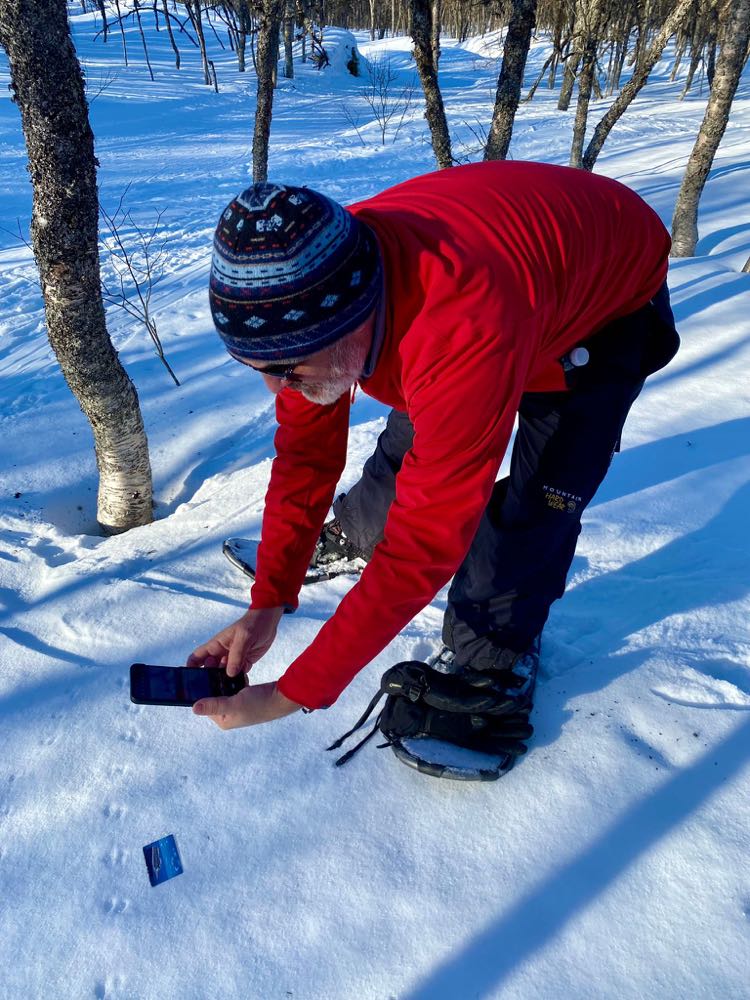
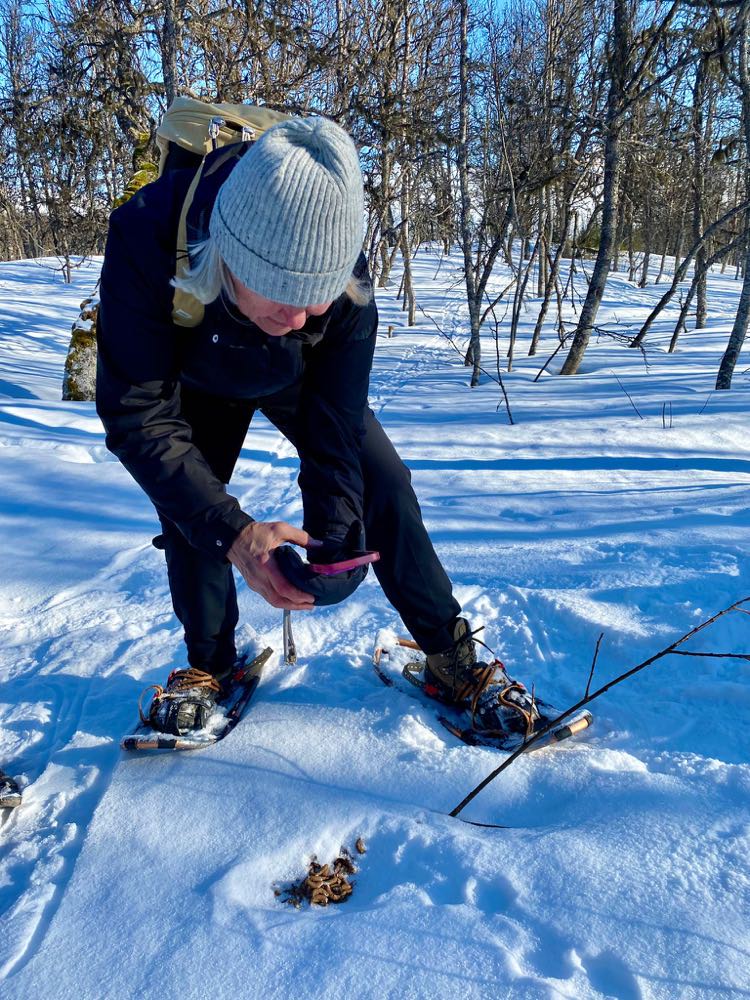
Citizen science participants assist with testing the pilot data collection platform. Here, they are testing the effectiveness of approaches for including a measure of scale in the image.
The team behind FOOTPRINTS-CITSCI
The FOOTPRINTS-CITSCI brings together five partners in Norway dedicated to driving innovative in citizen science initiatives and strengthening biodiversity conservation:
- Norwegian University of Science and Technology (NTNU): As the project coordinators, the NTNU team manages the design, implementation, and evaluation of citizen science activities across various project sites. They also lead efforts related to the collected biodiversity data and are responsible for spatial modelling.
- Norwegian Biodiversity Information Centre (NBIC): The NBIC team focuses on developing the machine learning workflows that will support the species identification platform. They also ensure that the FOOTPRINTS-CITSCI project adheres to the best open science practices.
- Wild Lab Projects: Specializing in citizen science and regenerative tourism, Wild Lab Projects leads the citizen science initiatives at the project’s field locations in Northern Norway.
- Trondheim Municipality: Collaborating with local municipalities is key to successful citizen science. Trondheim Municipality partners with FOOTPRINTS-CITSCI to align citizen science activities with long-term municipal strategies, addressing areas such as nature management, outdoor recreation, sports, and social inclusion
- iTrollheimen: Known for its innovative approach to nature-focused education and tourism, iTrollheimen oversees the citizen science programs at the Central Norway field locations, enriching the project’s educational impact.
“It is fantastic to work with such a great team. Each partner brings a really exciting depth of expertise, and together we are creating an innovative and impactful project that could not have been accomplished by any one partner alone. This illustrates something that’s also true of citizen science as a whole—we have the greatest impact when diverse perspectives come together to work in community,” shares Caitlin Mandeville, project coordinator.
What has been achieved so far?
Two productive in-person meetings
The project met for the first time in February 2024, to officially launch the initiative and outline plans for the upcoming year. After several virtual meetings and time spent working in parallel, they reconvened in person again in autumn 2024 to reflect on their achievements and to discuss the next steps.
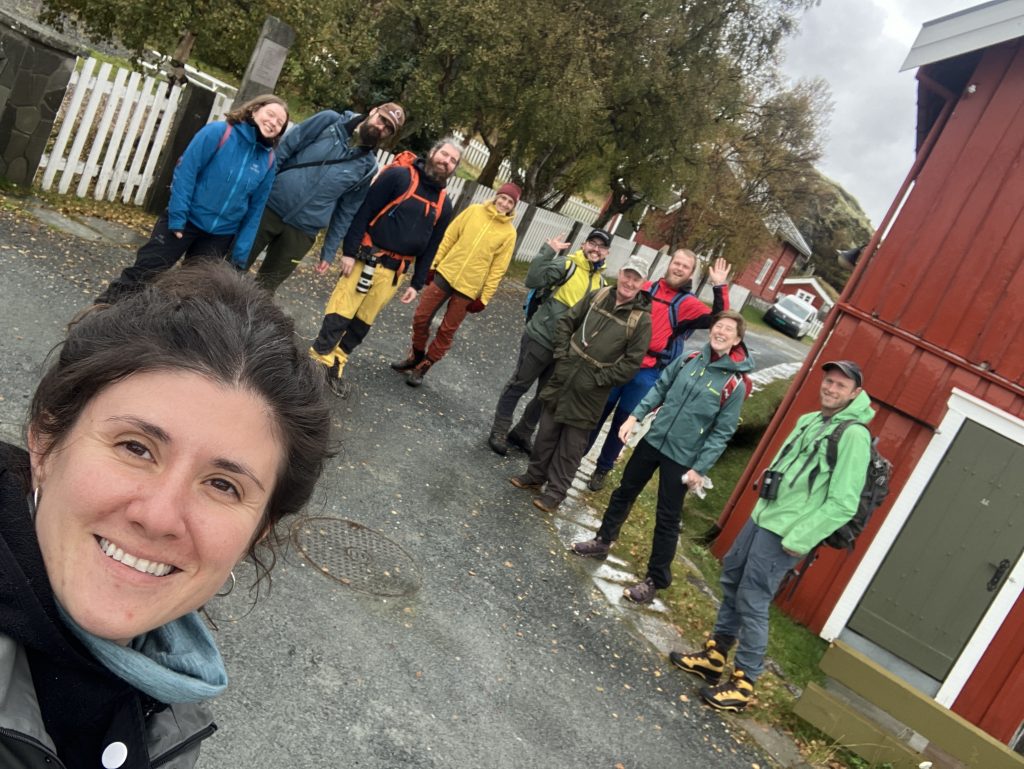
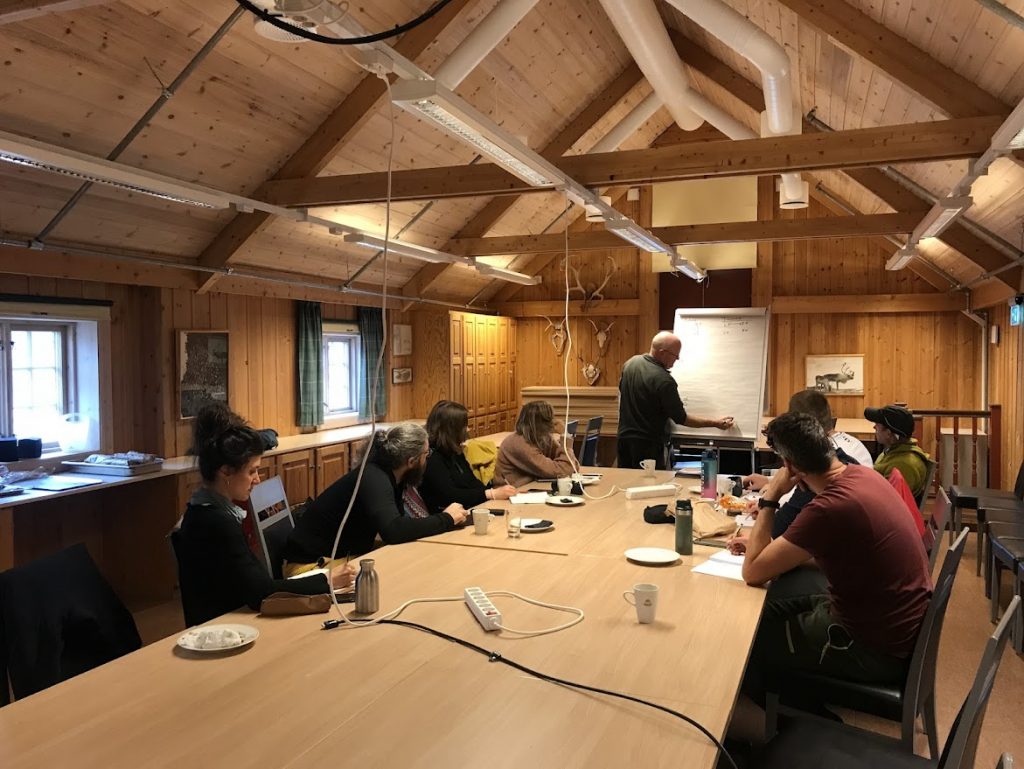
Members of the FOOTPRINTS-CITSCI project team participating in field training for track identification during their second in-person project meeting.
App development and testing
The team also launched a pilot version of a data collection platform and tested it during early 2024. In parallel, they gathered a large training database of photos of animal tracks with validated IDs. These images are used to train the model that will suggest species identifications for photos shared via the data collection platform.
Taxonomic training for the research community
The team was thrilled to offer training in taxonomic identification from animal track photos to current and future research professionals through online training sessions.
Citizen science program development
In preparation for the winter 2024-25 field season, the team was busy developing their citizen science program. They are focusing on making connections with relevant stakeholders and audience groups, training trip leaders to conduct FOOTPRINTS data collection outings, and planning the details of data collection protocols.
What’s next for FOOTPRINTS?
The biggest upcoming milestone is the winter 2024-25 field season. The team is currently busy preparing for guided citizen science activities at the Northern Norway, Central Norway, and Trondheim field sites, as well as for the broader rollout of opportunistic data collection. To maximize the impact of this launch, they are planning evaluation activities to carefully assess project successes and identify possibilities for improvement in the future.
They continue to work on the machine learning species identification platform, which will be developed and refined throughout the duration of the project. Additionally, progress is being made on value-of-information modelling, and the team looks forward to identifying new potential citizen science locations. They plan to use these pinpointed locations to consider
new stakeholders to collaborate with and will draw on the lessons learned from their work so far to determine how the project can best be implemented in new areas.
“We think there is so much value in viewing citizen science through a feedback loop framework! There isn’t always an opportunity for citizen science practitioners to engage closely with app developers, statisticians, and others working on the ‘back end’ with citizen science data. Having the opportunity within FOOTPRINTS-CITSCI to work across all aspects of citizen science data has been so rewarding so far!”
Stay connected
Follow FOOTPRINTS-CITSCI work via their website: https://footprints.citizenscience.no/

